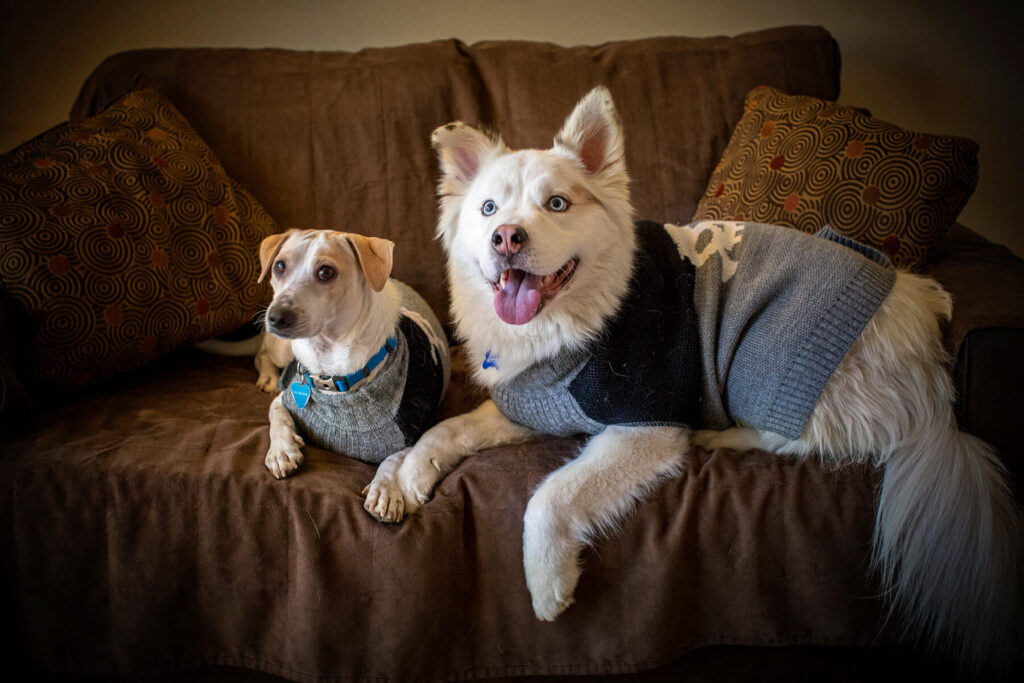Many people bundle up as the weather starts to turn chilly, but they don’t spend as much time worrying about their dogs. Dogs have thick, furry coats for warmth, so why should they need anything else in winter?
Cold weather can have an effect on your dog’s health and safety. Here are some simple cold weather care tips that will help your dog to get through the winter without suffering too much discomfort.
Use a Humidifier Indoors
Have you ever noticed that your skin becomes much drier in the winter? This is because cold air holds less water, and heating the air only takes more moisture out of it. You need a humidifier to add water back to the air.
You might not notice because of your dog’s winter coat, but the dry air can irritate a dog’s skin and cause cracking and flaking. Your dog might itch more and you could even see evidence of dry, flaking skin around the ears or on top of the head where hair is thinner. The humidifier helps to prevent the dryness that comes from moving out of the cold and into the dry air of the house.
Save Intense Grooming for Spring
Many dog owners don’t like that a thicker winter coat can sometimes mean more hair and shedding inside the home. If you have a dog that doesn’t shed, like some types of poodles, you might want to stay on top of grooming. However, it’s best to avoid giving your dog a short haircut during the winter. Their coats are essential for outdoor warmth.
You might take your dog to the groomer for a simple trim if things are getting out of hand, but save the close shave for a warmer season.
Avoid Unnecessary Bathing
During the summer, dogs often need bathing. They get dirty from spending time out in the mud, the lake and playing at the dog park. However, the warmer temperatures are kinder to a dog’s coat, and your dog produces more oils to help replace the ones that are lost from bathing.
Because winter air is dryer and irritates your dog’s skin, bathing removes oily residue from your dog’s coat, making the skin even more prone to flaking. It’s better to save baths for necessities, such as when your dog gets into something smelly on a walk or accidentally rolls in droppings.
Give Paws a Wash
Even though baths are few and far between, your dog will need their paws cleaned off after walks. The winter environment means increased salt and chemical ice melt on sidewalks and roads. The salt can be very irritating to your dog’s feet, and some can even cause slight inflammation, especially if the chemicals get stuck between the toes.
Small ice crystals can also get stuck on your dog’s feet. If your dog is small, they might prefer to walk with winter booties in order to protect their feet from the discomfort of an icy walk. Larger dogs might not tolerate boots, but you can rub a layer of petroleum jelly on the bottom of their feet before walks to help add a layer of protection.
Increase Food Intake
Your dog’s normal body temperature is actually higher than yours, resting at around 101 to 102.5 degrees Fahrenheit. When the colder months come, it takes more fuel out in the cold to maintain that temperature, even with a fur coat.
Your dog may need slightly larger meals to help stay at a healthy weight, especially if your dog is still very active in the winter. Working dogs and dogs that enjoy winter sports with their owners will burn much more calories than they normally would.
If your dog is overweight, however, you should speak with your veterinarian before increasing food intake.
Watch the Weather Forecast
Finally, one of the most important things you can do for your dog is to keep them warm. Dogs can suffer frostbite and hypothermia from being exposed to extreme, cold temperatures, especially for long periods of time. If it is too cold for you to feel comfortable outside, even when warmly dressed, it will also be too cold for your dog.
Pet dogs should have a place indoors to sleep and socialize during the winter, even if you are used to your dog spending most of their time outside. Never leave your dog alone in a car during the winter. Cars can become even colder inside than the normal outdoor temperatures, and it is possible for a dog to freeze to death.
Small dogs may need a warm sweater for winter walks outdoors, even when the temperature is not that cold. Without a large body mass, they can become chilled more quickly.
Keep walks short when the temperature drops, and improve ways to get your dog’s energy out, such as teaching new tricks or playing games inside the house.
For more information on cold weather care, contact us at 1st Pet Veterinary Centers.

